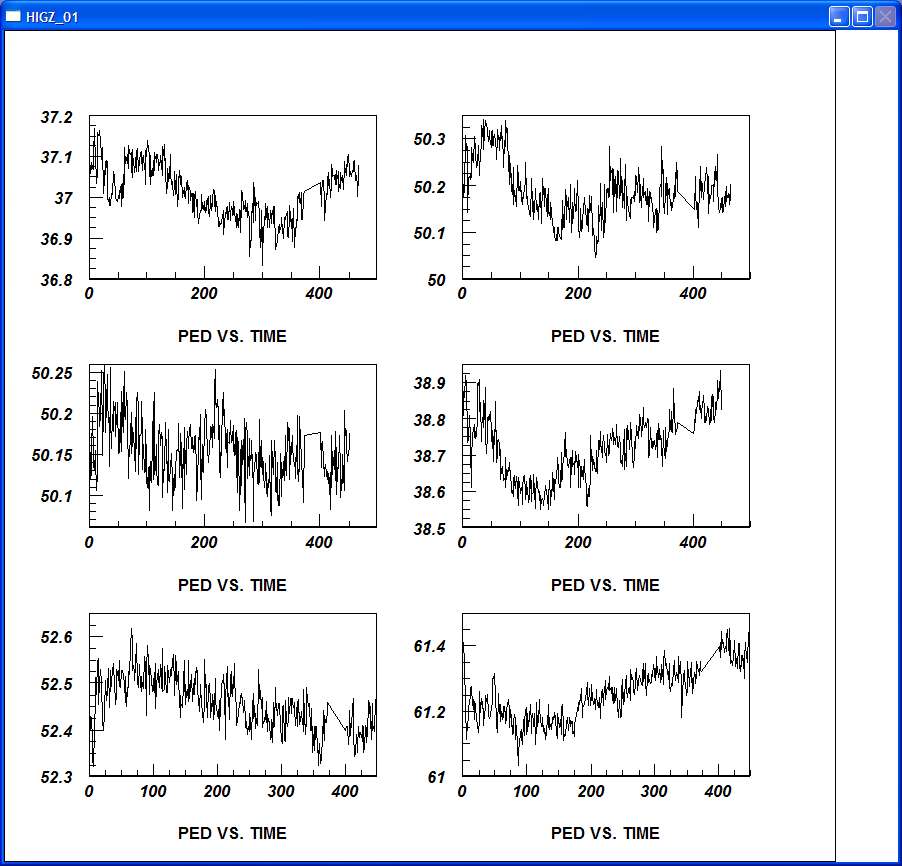TPX Pedestal Study
Tonko Ljubicic/BNL
Introduction
I saved the averages of the first 20 timebins for every sector, row and pad in every pedestal run
taken from Nov 2008 until now, June 18,2009. They were calculated in double precision after averaging
over typically 1000 events per pedestal run. The statistical error of these numbers is estimated
to be ~ 0.005 ADC counts.
The goal was to look at pedestal stability over time of the new TPX electronics.
Results
Plot represents pedestals for 6 specific channels as a function of pseudo-time.
The pseudo-time counter is just the counter of taken pedestal runs from about
Nov 6, 2008 to June 18, 2009. Note the significant range of months and even
seasons.
The 6 plots are different pads belonging to 3 different sectors and inner and outer subsectors, chosen at random.

Summary
1) The RMS of the pedestal values ranges from 0.04 to 0.08 ADC counts, depending on the pad.
This is a _very_ small variation!
2) Some pads show clear trends, some don't. Some are falling, some are rising. This is not understood nor attempted to.
However, the total variation is still small. See 1) above.
3) Although I looked carefully at a few runs taken with the RHIC clock vs. the ones taken with the "local" clock, I saw no difference in pedestal, up to these errors.
These plots include both RHIC and local clock runs.
Proposal (instead of a Conclusion)
1) We STOP taking TPC pedestal runs on every fill.
These runs are time consuming but are also taken at the worst
beam conditions (highest luminosity) with the TPC at still too high
gain so one can easily see spurious hits in the pedestals!
2) We take them ONLY ONCE a day with:
- Local clock
So we need not rely on RHIC running at the time. - No chamber gains (anode voltages at 0V) and preferably no beam in the machine.
This is to get a clean sample. - We already have such runs i.e. the pedestal_localclock runs taken just before our
daily pulser_localclock.
- tonko's blog
- Login or register to post comments
